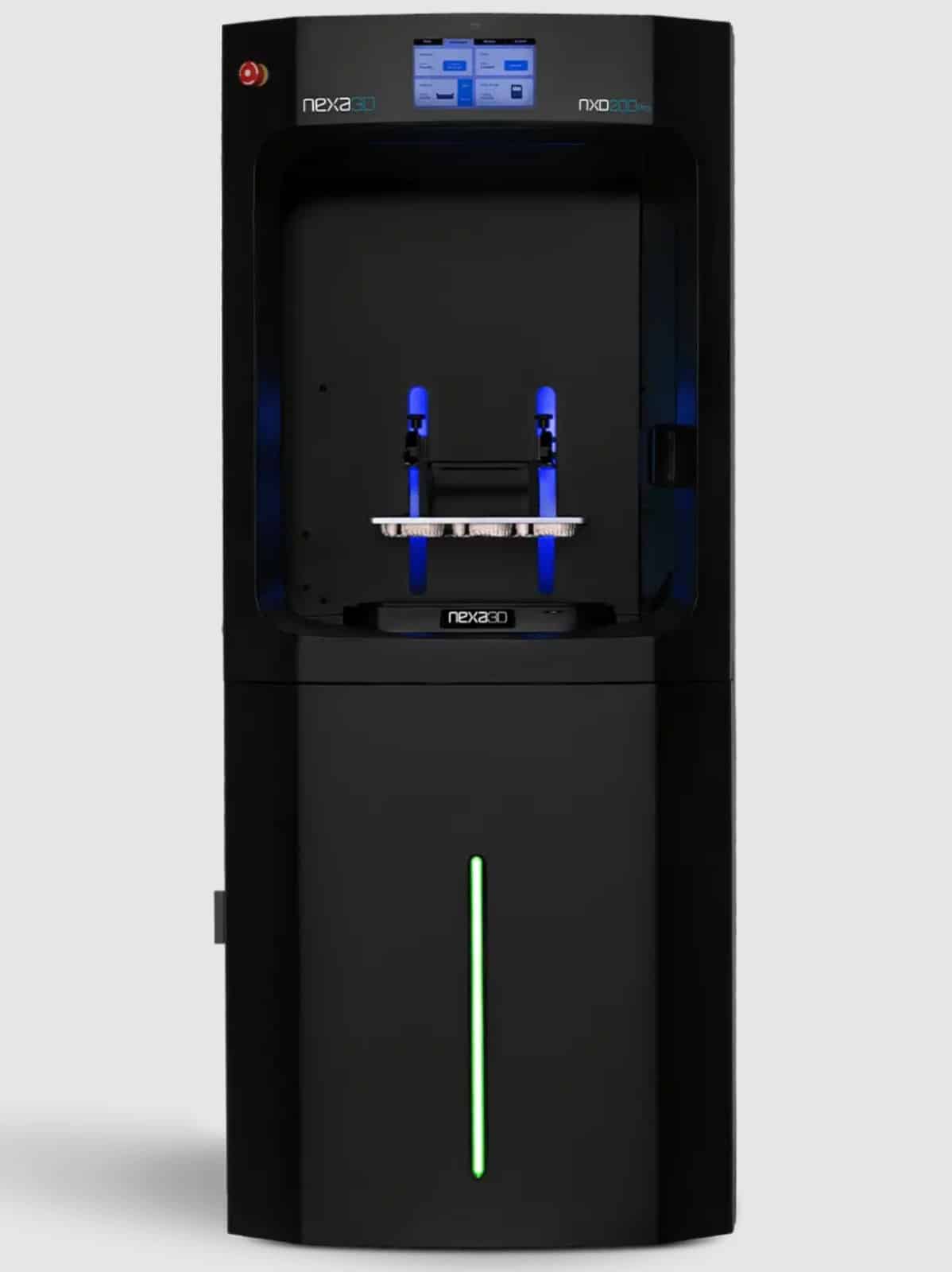Nexa3D, the maker of ultrafast polymer 3D printers for industrial and dental applications, has released the NXD 200Pro – its new Professional Series upgrade for its NXD 200 dental 3D printer. Based on Nexa3D’s ultrafast LSPc technology, the Pro Series delivers higher productivity and model accuracy with greater print success. The Pro Series opens the materials aperture to accommodate a broader range of dental materials, including KeyOrtho IBT and KeySplint Hard, both manufactured by Keystone Industries.
“We are thrilled to release this significant upgrade to our NXD 200 Dental 3D printer,” said Jim Zarzour, Head of Dental Solutions at Nexa3D. “We recognize the pressing need for higher productivity and lower operating costs that dental labs are faced with, and that is exactly why we enhanced the NXD 200 printer in order to deliver even better throughput with greater reliability, accuracy, and repeatability. Additionally, the new Pro Series opens the materials portfolio of the NXD platform to accommodate new dental materials that are tailored for ultrafast printing of dental parts.”
 The NXD 200Pro
The NXD 200Pro
The NXD 200Pro is an industry-leading production platform for same-day production of orthodontic models, surgical guides, splints, impression trays, and night guards. The printer is powered by the company’s proprietary Lubricant Sublayer Photo-curing (LSPc) technology and patented structured light matrix that delivers up to 20x productivity gains over other SLA and DLP 3D printers. Its large 8.5L build volume with dimensions measuring 275 x 155 x 200mm (10.8 x 6.1 x 7.8 inches) makes it a well-suited solution for high throughput dental lab applications.
Designed specifically for dental labs, the NXD 200Pro offers world-class dental model manufacturing capabilities at ultrafast speeds with validated Keystone performance dental resins. The NXD 200Pro is capable of producing up to 20 flat 3D printed dental models in less than 30 minutes.
Manufacturing on Demand
“At Key Dental Technologies, precision and high quality define our aligners, MyClearALIGN!, and Nexa3D’s dental 3D printing solutions enable us to deliver our product with incredible speed, high definition, and affordability,” said Christina Montiel, Laboratory Technician at Key Dental Technologies.
Nexa3D’s growing dental customer base includes large and small dental laboratories as well as dental practices looking to increase their 3D printing throughput with ease and affordability. “At Excel Orthodontics, our priority is providing exceptional orthodontic laboratory services, and Nexa3D’s LSPc technology with the NXD 200Pro enables us to deliver those services with accuracy, affordability, and twice the throughput of our previous 3D printing solution,” said Tyler Dowdle, Director of Operations at Excel Orthodontics.

The NXD 200Pro Series features advanced printability – powered by an armored light engine that improves print repeatability, consistency, and reliability, greater print success – leveraging Nexa3D’s latest light engine and Everlast membrane interface technology and enhanced auto-homing capability to reduce first layer gap and substantially increase first-print success, and higher consistency – reducing the variation in parts across a single build, delivering reliability, consistency, and higher production yields.
Coupled with the Pro Series upgrade are enhancements to NexaX software, including features like auto stacking, improved automatic part nesting, and cupping avoidance. Additionally, the new Settings Profile Manager supports the entire workflow by combining validation, customization, reusability, and shareability to create a powerful and adaptive tool for any application, Nexa3D printer model, or resin type.
The NXD 200Pro printer, and Upgrade Kits for the previous model, are available for order now.
You might also like:
iFactory3D introduces One Pro 3D belt printer: The use of a conveyor belt instead of a rigid print bed bridges the procedural gaps of additive manufacturing. As a result, the One Pro prints long objects in virtually unlimited lengths and enables simultaneous, automated batch production with minimal human-machine interaction. The 45° printing angle means less material is required and complex geometries (including hollow shapes) can be printed without support structures – enabling the printing of bionic features, for example, that can be reinforced with resin, foam, and fibers, and have an optimized topology.
* This article is reprinted from 3D Printing Media Network. If you are involved in infringement, please contact us to delete it.
Author: Edward Wakefield

Leave A Comment